Netflix’s ‘Happy Jail’ Fil-Am maker gives a close-up of Cebu’s viral dancing inmates
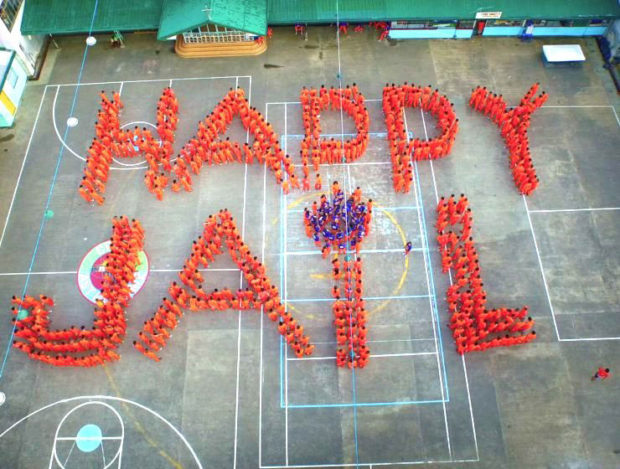
“Happy Jail” by Filipina American filmmaker Michele Josue is a five-part docuseries available globally on Netflix. NETFLIX
LOS ANGELES — While the Philippine island of Cebu boasts some of the best beaches in the country, it has also gained international attention for its jail that features dancing as a recreational activity for inmates.
Cebu Provincial Detention and Rehabilitation Center (CPDRC), a maximum security prison, made headlines in 2007 after a video of around 1,500 inmates dancing to Michael Jackson’s “Thriller” went viral.
Twelve years later, that original video has reached 58.5 million views. Visitors have also flocked to the jail to watch the inmates dance live; at one point, monthly performances were open to the public.
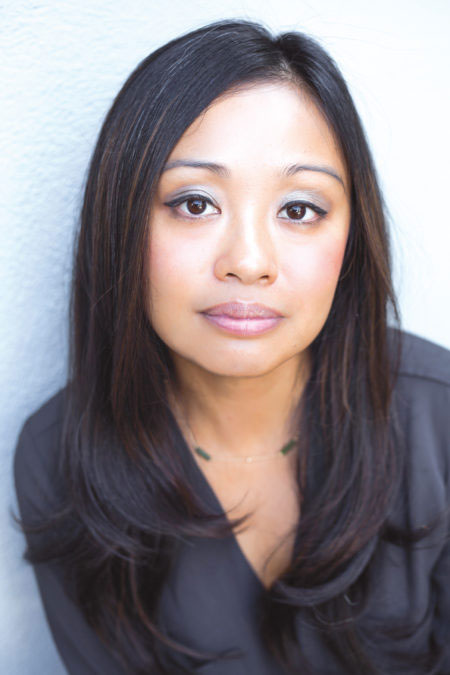
Emmy Award-winning filmmaker Michele Josue, creator of “Happy Jail.” NETFLIX
But beyond the choreography, what actually goes on inside the prison? Filipina American filmmaker Michele Josue had the same question, which led to the creation of “Happy Jail,” a five-part documentary series that premiered globally on Netflix on Wednesday, Aug. 14.
After finishing the documentary “Matt Shepard is a Friend of Mine” — which won the Daytime Emmy Award for “Outstanding Special Class Special” in 2016 as well as 10 Best Documentary and Audience Choice Awards globally — Josue shifted gears to the Cebu jail and spent three years filming there.
In that time, the Philippine government ushered in a new administration and CPDRC faced scrutiny when it hired an ex-convict as a management consultant.
What was intended to be a documentary on the dancing program evolved into “an in-depth, humanistic document of the complexities of life at CPDRC,” Josue said.
In a recent interview with the Asian Journal, the Filipina American filmmaker walks us through the filming process and shares hopes it will bring more nuanced Filipino and Fil-Am stories to a global platform like Netflix.></di
AJ: At the end of the day, what is the call to action after watching “Happy Jail?”
MJ: “Happy Jail” is an extraordinary story and one that we definitely don’t see in the mainstream. The inmates are some of the most vulnerable people in society without a voice. I’m proud of “Happy Jail” providing them that platform. There are people suffering, communities suffering and “Happy Jail” puts a human face to that.
But there’s also this inspirational element to it as well that I think is a touchpoint for Filipinos all around the world that they understand we are able to find joy, happiness and hope in the face of incredible challenges and hardships. That is what “Happy Jail” does very well. The world is better served recognizing that.
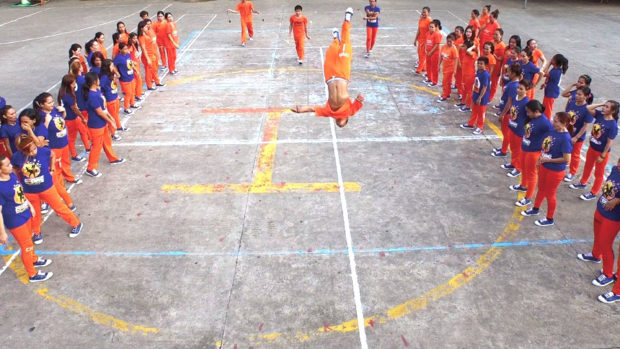
NETFLIX
Also, representation — just showing people that this is happening and making them aware and connecting to it on a human level so that it may resonate deeply and that they may want to get more educated and see what can be done. Just think about these things in a more empathetic way. Ultimately that’s our job as storytellers to provide that opportunity for people to step into other people’s shoes that they may not normally get to relate to at all.
AJ: Without giving too much away, are there any particular moments/scenes within the episodes that continue to resonate with you?
MJ: Absolutely! It’s really hard to answer that without giving it away for sure. But I’ll say one funny thing, anytime we went to start filming for the day…we’d have maybe a 30-minute drive up to the mountain to the jail and we’d talk as a crew about what we would prepare for and what we were going to film. But we always knew that as soon as we got there, things would change.
It reminds me of an episode in “The Simpsons,” how an episode starts one way and then it pivots and becomes about something else. I take that with me, just how the pace is so fast and it kept me on my toes. There are so many moments I can pinpoint to throughout the show where I could say, “Oh yeah, that was totally unexpected,” especially at the end of episode 3 — we did not see that happening. A lot of dances were wonderful and I’ll always take that with me.
AJ: After “Matt Shepard is a Friend of Mine,” what was next in finding another story and developing ‘Happy Jail’ based on the viral video in 2007?
MJ: Both of these stories were happening at the same time, at least for me. I wanted to make “Matt Shepard is a Friend of Mine” when I was ready and I had the blessing of Matt’s family. That was around 2007, which was when the viral YouTube video of “Thriller” came out. I found that equally compelling but I wanted to focus on Matt Shepard.
When I felt that could truly stand on its own legs, I switched focus to the dancing inmates. It was something that stuck with me even through the whole “Matt Shepard is a Friend of Mine” filming period. I saw the video and was so fascinated by it and had so many questions. How was it possible that the inmates were able to dance so joyfully and [be] united together within this jail system? I knew I would go back to that as soon as I was ready.
AJ: What the process in terms of planning out how you would film and get access to the Cebu jail as well as to local politicians and public figures?
MJ: The first step was having to see [the jail] with my own two eyes. It’s one thing to see it on YouTube, but another to actually be there in person and see if this is really a worthy endeavor. I went to the Philippines with my family in the summer of 2014 and saw [the inmates] dance this beautiful, 45-minute Michael Jackson medley and I got goosebumps.
I was looking at different inmates in the crowd and seeing their faces…so happy to be performing, to hear the music and to be moving like that was when I knew that yes, this is something I indeed wanted to do and explore but it was only a few years later when I could devote the amount of time it needed.
We took a spec trip to the jail in 2016 and tried to get the lay of the land. It wasn’t like a methodically thought-out process. It was more of we took it very slowly over many years. We started this project as more straightforward on the dancing inmates and that program but because of the timing and what was happening at the jail, it just grew bigger and things kept unfolding.
As a whole team, we pivoted and followed the action wherever that led us. That took us to speaking with the local government officials and just doing whatever we could to follow the story. It was more of a long, organic process than something that was plotted out ahead of time.
“Happy Jail” features the famous dancing program at Cebu Provincial Detention and Rehabilitation Center (CPDRC) in Cebu, Philippines. | Photo courtesy of Netflix
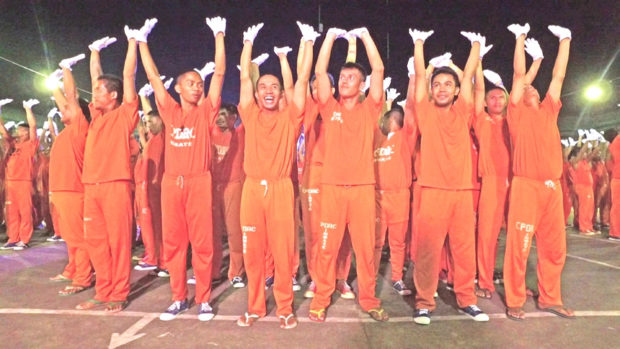
NETFLIX
AJ: Was there any pushback or any challenges during the production?
MJ: Surprisingly no! That still blows my mind. They were very welcoming and they let us have full access to the jail. We tried to be as low-key as possible and I very strongly believe in building trust and rapport on camera, as well as off-camera.
We were there at the right time, or the wrong time, depending on how you look at it. They trusted us so there really wasn’t any pushback. It was just when the jail was changing and the administration was changing when we were starting to feel that from a production standpoint so access was not as open by the end of our show’s narrative.
AJ: How did Netflix get involved to have “Happy Jail” as a five-part series versus a full-on documentary?
MJ: Our conversations with Netflix happened pretty early on, which was amazing. Our executive producer Joe Amodei has a very good relationship with Netflix so when we started filming, Joe brought this to their attention in the early days and it was something that piqued their interest…Netflix [is] an amazing, powerful platform…[with] some of the boldest stories out there so we thought this would be a perfect home for “Happy Jail.”
AJ: The Netflix catalog has the popular series “Orange Is The New Black” and they’ve done documentaries on prisons around the world. Where does “Happy Jail” fit into Netflix’s offerings and what can we learn as viewers about the Philippine jail system and even Filipino culture?
MJ: We’re at the forefront of that movement, in my opinion. Netflix is wonderful in that it’s so diverse both within their stories and their cultural offerings. Netflix is around the world and our show will be available in 190 countries…The world is interested in what’s happening on the other side of the globe.
There are so many amazing filmmakers and storytellers from the Philippines and we’re starting to get our stories out there and we’re starting to tell it the way we want it to be told. It’s awesome to have a champion in Netflix which understands that and can provide those stories to international audiences.
AJ: “Happy Jail” drop(ped) on August 14 and the organization FilAm Arts is holding a community screening in Los Angeles for it the day after. What else can we expect from you and any other projects you’re working on in the future?
MJ: I’m not quite sure as we’re kind of taking it day by day. I’m an independent filmmaker through and through and I’ve never worked at this level where something I’ve created is going to be seen or available around the globe simultaneously…It’s very overwhelming so I’m trying to be as open and as grateful to the opportunity as I can. I would love to do more ‘Happy Jails’ as possible. I see there are endless amounts of fascinating stories coming out of the Philippines and especially with the dancing inmates.
I do hope to create more stories that amplify the Filipino and Filipino American experience but other than that, I am hoping for the best for the show and I hope it helps other shows like it come to light as well. v>
Asian Journal (AJ): What were some influences growing up that led you to become a filmmaker?
Michele Josue (MJ): My parents are from the Philippines… a very small town in Negros [Occidental] called Sagay City. My mom got a job at the International Monetary Fund in D.C. so she came over to the states in her 20s and my dad followed. They wanted to start a new life. We were born and [lived in] Maryland. Through my mom’s work, I got the opportunity to study abroad at an international boarding school in Switzerland and it was there where my love of art, story and theater took place…A foundational part of our curriculum at that school was learning about the arts and seeing important works in museums…I started writing my own plays and casting my friends in them and that’s when I discovered I had a lot more fulfillment being behind the scenes. Then I applied to film school at Emerson and it goes on from there. I discovered documentary many, many years later.
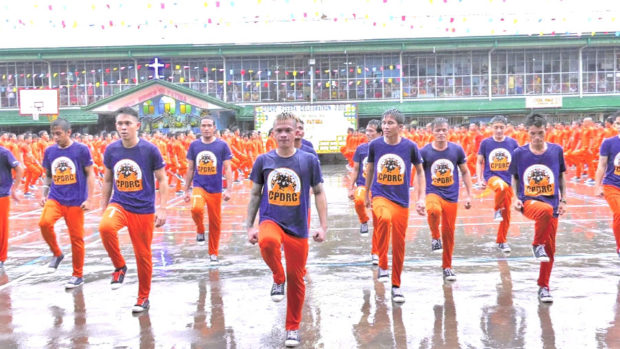
NETFLIX
AJ: How did you land on documentaries as your form of storytelling?
MJ: It’s really interesting because I went to film school in the ‘90s. There was such a good wave of films back then, especially independently speaking — just really well-written films. [Quentin] Tarantino was coming up and I thought that was going to be my avenue.
Through a job I got doing short documentaries for schools and universities, like branded content, I realized for me, I loved connecting to real people, being open and listening to them. I found that real people and real stories were just so much more fascinating and layered than anything I could write. I feel that was something I enjoyed and found satisfying.
AJ: What have you learned about yourself as a filmmaker through this and any advice for aspiring storytellers?
MJ: I think it’s the same lessons that keep repeating itself to me over and over throughout my career. You always have to be a champion for yourself and not expect someone else to come in and be that superman or superwoman for you. No one is going to be a bigger advocate for yourself and your voice than you. So, knowing and leaning into that is always my ultimate lesson.
It’s really what you put into the project. I’m passionate, tenacious and hardworking and I think that comes across in my work. I would say to anyone to just know it’s not easy but it’s worth it and you do have to have that passion and drive. In the end, it really, really is worth it and it’s important what we do…for people to see stories like this because otherwise, they won’t know about it.

